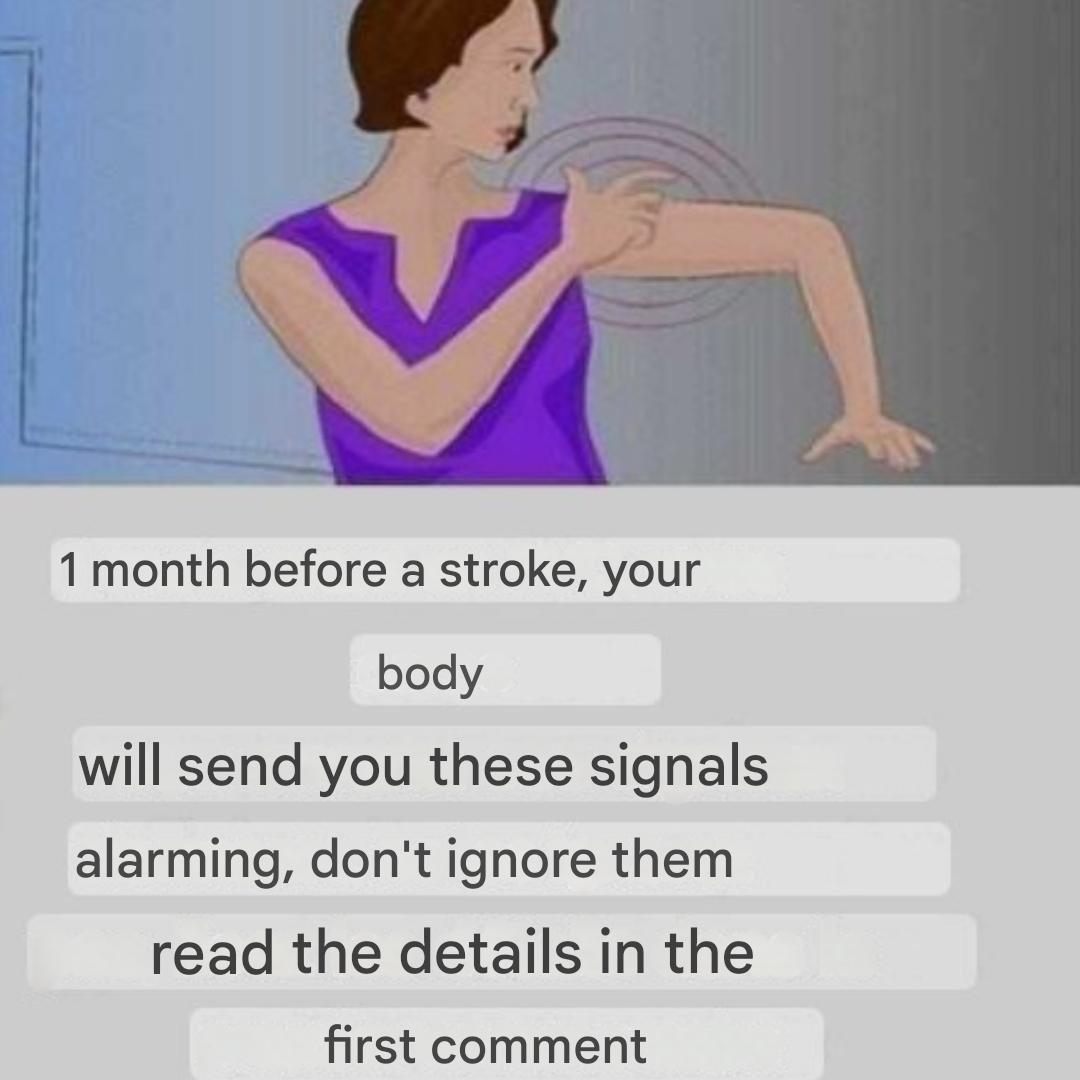ADVERTISEMENT
These “warning strokes,” also known as **Transient Ischemic Attacks (TIAs)** or “mini-strokes,” are often considered precursors to a larger stroke. A TIA is typically a temporary blockage in a blood vessel that causes stroke-like symptoms, but these symptoms usually resolve within a few minutes to a few hours without lasting effects. The presence of TIAs is a critical indicator of the need for medical attention, as they can signal a higher likelihood of a more severe stroke in the future.
TIAs or other pre-stroke symptoms can appear weeks or even a month in advance. During this time, individuals may experience subtle warning signs that go unnoticed or are attributed to other conditions. It’s essential to recognize and act on these symptoms to prevent a full-blown stroke.
### Key Warning Signs of a Stroke That May Appear One Month Before
While the symptoms of a stroke vary from person to person, there are several common warning signs that may appear in the weeks leading up to a stroke. These warning signs are subtle but should never be ignored.
#### 1. **Frequent Headaches**
One of the early warning signs of an impending stroke is the onset of frequent headaches. These headaches may be severe, persistent, and different from usual tension or migraine headaches. In particular, they may be localized to one side of the head or associated with sudden vision changes. A headache that occurs along with other symptoms such as dizziness or visual disturbances could signal an increased risk of stroke.
A study published in *Neurology* found that people who experience new-onset headaches, especially if they are accompanied by visual changes or nausea, may have an increased risk of having a stroke later on. If these headaches are recurrent and not easily explained by other causes, it’s essential to see a doctor.
#### 2. **Sudden Vision Changes**
A sudden or gradual loss of vision in one eye or both eyes can be a warning sign of a stroke, particularly if these changes are associated with other symptoms like weakness, numbness, or dizziness. This could indicate an issue with blood flow to the eye or the part of the brain responsible for vision.
In some cases, vision problems might appear weeks or even a month before the stroke occurs. A person may notice blurred vision, double vision, or blind spots, often without an obvious cause. These symptoms may resolve temporarily but could indicate an increased risk of a more significant stroke.
#### 3. **Dizziness or Vertigo**
Frequent dizziness or a feeling of spinning (vertigo) that persists or comes and goes over time can be a sign that something is wrong with the blood flow to the brain. This sensation is often accompanied by a sense of imbalance or lightheadedness.
Dizziness can also occur due to other factors, like dehydration, ear infections, or low blood sugar. However, if dizziness persists, is associated with weakness, or occurs along with other neurological symptoms, it could be an early sign that a stroke is imminent.
#### 4. **Numbness or Weakness in One Side of the Body**
Numbness or weakness, particularly if it affects only one side of the body (such as one arm or leg), is one of the hallmark symptoms of a stroke. While this could occur suddenly during a stroke, it is also possible for mild or intermittent numbness to appear weeks before the event. The sensation might come and go or may affect only certain areas of the body.
For instance, an individual might experience numbness or tingling in the fingers, hands, or one side of the face, often without any obvious explanation. These episodes may be brief but should never be ignored, especially if they occur repeatedly.
For Complete Cooking STEPS Please Head On Over To Next Page Or Open button (>) and don’t forget to SHARE with your Facebook friends
